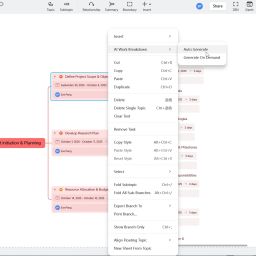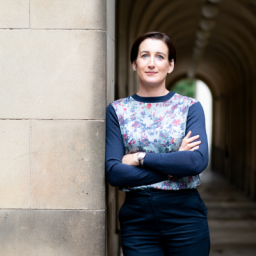
Paige Coulthurst, operations director, Soap Media
As a project manager, ensuring shared responsibility for the success of a project is crucial. While it can be challenging, it also presents an opportunity to foster engagement and collaboration among all involved; where every member is a crucial cog in the machine, even the client.
Develop a comprehensive project plan The first step of managing every project is to create a detailed project plan that outlines each task and clearly defines the responsibilities of your team and the client.
In agency environments, it’s crucial to determine the client’s responsibilities at the very beginning of the project so the client understands what’s expected of them. For example, during the design phase, clients should be aware of their role in reviewing designs and providing timely feedback. By scheduling these responsibilities and giving ample notice, clients can better manage their internal team’s schedules, ensuring they fulfil their commitments without causing delays.
Hold clients accountable
Leading on from giving clients their own tasks is holding them accountable. Provide them with clear instructions and deadlines for their deliverables. For example, if the client is responsible for content writing, specify what content needs to be delivered, in what format, and by when.
Clear communication about deadlines and their impact on the project timeline is crucial. Clients need to understand that delays on their part can have a cascading effect, potentially pushing back the entire project. By emphasising the importance of their contributions, you encourage clients to take their responsibilities seriously, ensuring smoother project progression.
Create a master project hub
A master project hub is a central repository that contains all project-related information and documents. Things this should include are:
- Project specifications
- All briefs
- Links to designs and other key documents
- Login information
- QA checklists
- A work-in-progress (WIP) tracker
This centralised hub ensures all stakeholders have access to the information or documentation they need at any stage of the project, promoting shared ownership and responsibility. It also facilitates continuity during staff absences. By having all documents and updates in one place, team members can easily find the information they need without relying on someone else’s availability. This approach not only improves efficiency but also fosters a sense of accountability, as everyone can see their contributions and how they fit into the larger project.
Write excellent briefs
The quality of your briefs directly impacts the project’s success. A clear, detailed brief transfers responsibility to the recipient, ensuring they understand the requirements and expectations. A great brief should always include:
- References or examples (if provided)
- A structured format for clarity (ideally agreed on collaboratively by the person creating the brief and the recipient)
- Clear objectives and deliverables
- A deadline
Effective briefs enable delegation, freeing you, the project manager, from the burden of micromanagement. Everyone has the information they need to complete their work accurately and efficiently, having total ownership over the outcome. This sense of responsibility is crucial for the overall success of the project as individuals know what’s expected of them and when it’s their time to shine. In the Web Project Hub mentioned above, they also have a clear view of how their work impacts the rest of the project delivery.
Establish regular communication and feedback loops
Maintaining strong communication is absolutely essential in project management. Plan regular check-ins and feedback sessions from the outset, and establish clear agendas for meetings to maximise their effectiveness. Ask open-ended questions to identify blockers, areas for collaboration, and additional support needs, encouraging in-depth discussions among team members. This proactive approach helps ensure everyone is aligned, aware of progress, and has the opportunity to address issues quickly, before they become major roadblocks.
Alongside scheduled meetings, it’s also worth implementing informal check-ins, daily stand-up meetings, or quick status updates via messaging platforms. This ongoing communication helps maintain momentum and keeps everyone engaged and informed.
Tip: Always keep detailed meeting notes, and follow up with the team in writing afterwards. This helps them ensure the accuracy of the notes taken and enables them to be held accountable for anything they agreed to within the meeting.
Implement a defined process At Soap, we create detailed process maps for every task within a project. These maps outline:
- The sequence of tasks
- Roles and responsibilities of team members
- Required meeting participants
- Actions to move from one process step to the next
- QA procedures
- Time allocations
A well-defined process provides a roadmap for the project, ensuring that all tasks are completed in the correct order and to the required standard. It also facilitates accountability. When everyone knows their roles and responsibilities, it is easier to track progress and identify any issues.
The process should be dynamic, evolving based on lessons learned at each stage. This flexibility means it remains relevant and effective and helps promote continuous improvement and shared responsibility. A process should also be created with the project team for even more commitment and accountability.
Conduct project retrospectives
Always run a retrospective at the end of each project, regardless of the outcome. Analyse what went well, what didn’t, and why. Use these insights to refine your processes and improve future projects.
Encourage open and honest feedback and productive conversations. This transparency helps build trust and promotes a collaborative approach to problem-solving. By involving the entire team in the retrospective process, you ensure that everyone has a voice and can contribute to the continuous improvement of your processes and practices.
Tip: Start a project retro document from day one of the project. Throughout the project, people can add notes of things that went well (or not so well!). It’s very hard to remember everything by the end of a project, so this helps to ensure nothing is missed.
Be the team’s biggest supporter As a PM, your enthusiasm can significantly impact the team’s morale and productivity. Celebrate successes, give shout-outs and maintain a positive attitude. Show your team that you trust and value their contributions. By fostering a positive and supportive environment, you create a culture of accountability and excellence, where everyone is motivated to contribute to the project’s success. Good work deserves to be recognized.














